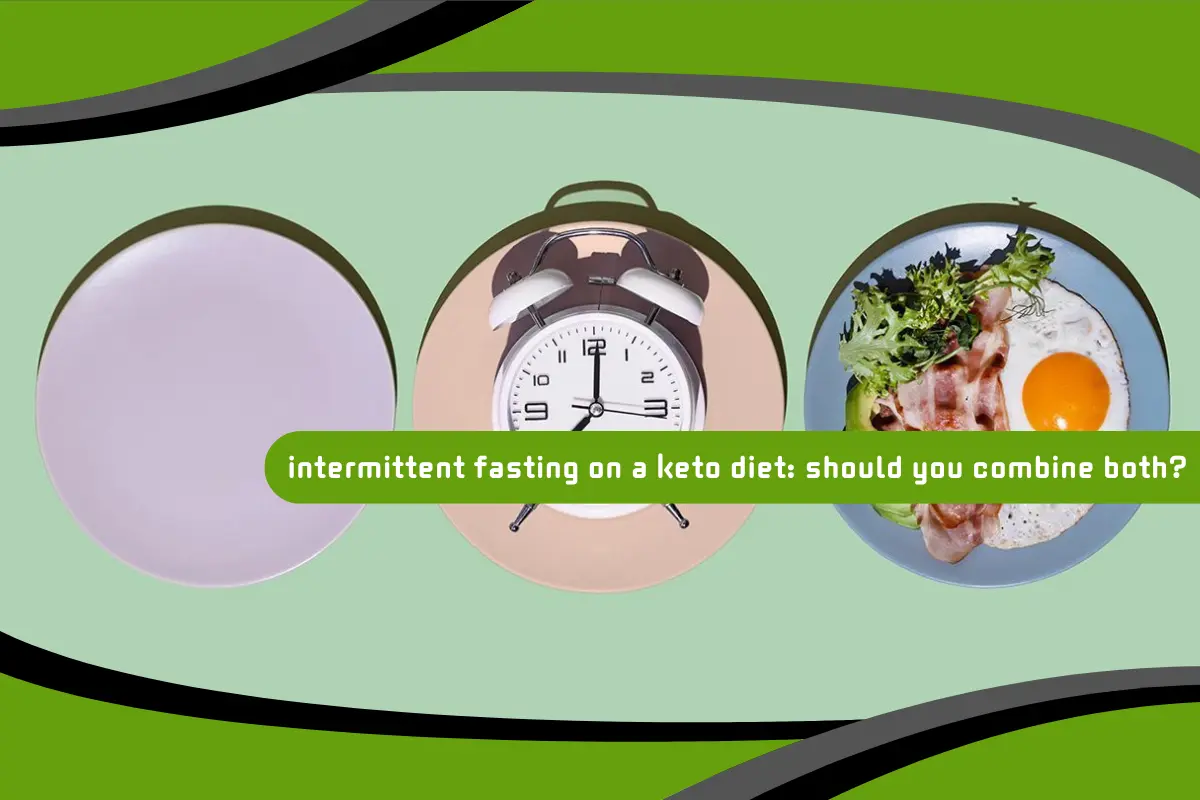The world of nutrition and weight loss is constantly evolving, and two popular strategies have emerged as game-changers: intermittent fasting (IF) and the ketogenic (keto) diet. Each has its own loyal following, unique benefits, and scientific backing. But what happens when you combine them? Could this pairing create a powerful synergy for fat loss, mental clarity, and metabolic health? Or does combining them add unnecessary complexity? In this article, we’ll explore whether pairing intermittent fasting with the keto diet is a smart strategy, looking at the science, the benefits, the potential downsides, and how to do it safely and effectively.

What Is Intermittent Fasting?
Intermittent fasting is not a diet in the traditional sense but rather a pattern of eating that cycles between periods of fasting and eating. Common methods include the 16:8 approach, where you fast for 16 hours and eat during an 8-hour window, and the 5:2 method, where you eat normally for five days and restrict calories for two. IF aims to tap into your body’s natural ability to burn fat and stabilize insulin levels, while also giving your digestive system a break and potentially improving cellular repair processes.
What Is the Keto Diet?
The ketogenic diet is a high-fat, very low-carb eating plan that shifts the body into a metabolic state called ketosis. In ketosis, your body becomes highly efficient at burning fat for energy, both from dietary sources and stored body fat. Carbohydrate intake is usually restricted to around 20-50 grams per day. As a result, the body produces ketones, which serve as an alternative fuel source for the brain and muscles. Keto is widely used for weight loss, but also for improving mental clarity and managing certain medical conditions like epilepsy and insulin resistance.
The Science Behind Both Approaches
Both intermittent fasting and the ketogenic diet share a common goal: to shift your metabolism from using glucose (sugar) as its primary fuel source to burning fat instead. Fasting naturally lowers insulin levels, and so does reducing carbohydrate intake. This dual approach promotes deeper fat burning, faster entry into ketosis, and potentially more efficient energy use throughout the body. Additionally, both practices may enhance mitochondrial function, reduce inflammation, and promote longevity, making them attractive from a health optimization standpoint.
Watch also: How to Transition Off Keto Without Gaining Weight: A Complete Guide to Reintroducing Carbs Safely
Why Many People Combine Intermittent Fasting and Keto
The combination of IF and keto is appealing because they complement each other. Since both methods reduce insulin levels and support fat metabolism, they may accelerate the benefits of each other. Many people report faster weight loss, fewer cravings, and increased energy when practicing both together. Intermittent fasting can also make it easier to maintain ketosis, as the absence of frequent meals reduces the chances of accidental carb intake. For many, combining both helps simplify their lifestyle while maximizing results.
Fat Adaptation and Its Importance
When you begin keto or fasting, your body undergoes a process called fat adaptation, where it learns to efficiently burn fat instead of relying on carbohydrates. This can take a few days to weeks. During this transition, you may experience fatigue, irritability, and cravings—often called the “keto flu.” Combining fasting with keto may speed up fat adaptation, as both promote the production of ketones. Once fully fat-adapted, many individuals report stable energy levels, mental clarity, and reduced hunger.
The Role of Insulin in Weight Loss
Insulin is a hormone that plays a major role in storing fat. When insulin levels are high, your body is in storage mode, making it difficult to burn fat. Both keto and intermittent fasting naturally lower insulin levels by limiting glucose spikes. This not only facilitates weight loss but also improves metabolic flexibility—the ability to switch between burning carbs and fat for energy. By reducing insulin, you enhance your body’s ability to tap into fat stores and maintain stable blood sugar levels.
Benefits of Combining Both Approaches
The synergy between intermittent fasting and keto can result in numerous benefits. These include faster fat loss, improved mental clarity, reduced cravings, more stable energy throughout the day, and better digestion. Some studies even suggest improvements in insulin sensitivity, cardiovascular health, and reduced inflammation. For individuals seeking an efficient, science-backed strategy to optimize their health and physique, combining these two approaches may be one of the most effective methods available.
Potential Drawbacks to Be Aware Of
While combining IF and keto can offer powerful benefits, it’s not suitable for everyone. The dual restriction of carbs and eating windows can be intense, especially in the beginning. Some people may experience fatigue, low energy, or nutrient deficiencies if they don’t plan their meals carefully. Women, in particular, may need to monitor their hormonal health, as too much fasting or low-carb eating can impact menstrual cycles. Listening to your body and adjusting accordingly is crucial.
Who Should Avoid This Combination?
Not everyone is a good candidate for combining intermittent fasting and keto. Pregnant or breastfeeding women, individuals with a history of eating disorders, or those with specific medical conditions should consult a healthcare professional first. People with very high activity levels or athletes may also need more carbohydrates to fuel performance. Always evaluate your individual needs, lifestyle, and health status before starting any new dietary regimen, especially one involving two restrictive elements.
Best Eating Window for Keto and Fasting
While there is no one-size-fits-all fasting window, many people on keto find success with a 16:8 or 18:6 protocol—fasting for 16 or 18 hours and eating within a 6 to 8-hour window. This approach provides enough time to consume nutrient-dense meals while staying in ketosis. For others, shorter eating windows like OMAD (One Meal a Day) may be effective, but should be approached cautiously and only once your body is fully fat-adapted.
What to Eat During Your Eating Window
It’s essential to prioritize nutrient-dense, keto-friendly foods during your eating window. These include healthy fats like avocado, olive oil, and nuts; moderate amounts of protein from eggs, meat, or fish; and plenty of low-carb vegetables such as spinach, kale, and broccoli. Avoid processed keto snacks and artificial sweeteners as much as possible. Instead, focus on whole, real foods to provide your body with the vitamins, minerals, and fiber it needs to function optimally.
Watch also: How to Safely Transition Off Keto: A Step-by-Step Guide to Reintroducing Carbs Without Gaining Weight
Managing Hunger and Cravings
Cravings often decrease once you are fat-adapted, but they can still surface occasionally. Drinking plenty of water, incorporating electrolytes, and consuming high-fat meals can help manage hunger. Black coffee, green tea, or herbal teas are also fasting-friendly and can suppress appetite during fasting periods. Listening to hunger cues and avoiding emotional eating is critical. Practicing mindfulness and having a strong “why” behind your dietary choices can also help you stay consistent and motivated.
Hydration and Electrolyte Balance
When fasting and eating low-carb, your body tends to excrete more water and electrolytes. This makes staying hydrated and replenishing minerals like sodium, potassium, and magnesium essential. Without adequate electrolyte balance, you may experience fatigue, headaches, or muscle cramps. Consider adding a pinch of sea salt to your water, drinking bone broth, or using keto-specific electrolyte supplements to maintain balance and prevent the dreaded “keto flu.”
Exercise and Physical Performance
Combining keto and intermittent fasting may affect your workouts, especially during the adaptation phase. Initially, you might feel weaker or more sluggish. However, once your body adjusts, many find increased endurance and improved recovery. Fasted workouts, especially light cardio or weight training, can help boost fat burning. Still, it’s crucial to listen to your body, fuel appropriately during your eating window, and not push beyond your limits, especially in the beginning.
Sleep Quality and Recovery
Some people report disrupted sleep when starting keto or fasting, often due to electrolyte imbalances, hunger, or hormonal changes. Over time, however, many notice improvements in sleep quality, including deeper, more restful sleep. Prioritizing a consistent sleep schedule, managing stress, and avoiding stimulants late in the day can enhance recovery and overall well-being. Sleep is essential for hormone regulation, fat loss, and mental clarity—core goals of both keto and intermittent fasting.
Mental Clarity and Cognitive Benefits
One of the most praised benefits of combining IF and keto is enhanced mental clarity. When your brain uses ketones for fuel, many people report sharper focus, better memory, and more sustained energy. Fasting may also trigger the production of brain-derived neurotrophic factor (BDNF), a protein linked to learning and brain resilience. For individuals seeking better cognitive performance, this dietary combination may offer a natural and sustainable solution.
How to Break Your Fast on Keto
Breaking a fast on keto requires intention. Start with a small, nutrient-rich meal that’s easy to digest, such as bone broth, avocado, or eggs. Avoid large meals that are high in dairy or processed fats, as these can upset your digestive system. Slowly reintroduce solid foods and allow your body to adjust before consuming heavier meals. How you break your fast can set the tone for the rest of your eating window and impact how you feel.
Tracking Your Progress
Monitoring how your body responds to this combined approach is essential. Track metrics like body composition, energy levels, sleep quality, and mood. Some people use ketone strips or glucose monitors to evaluate their state of ketosis and blood sugar stability. Journaling your meals and how you feel can provide helpful insights and help you make necessary adjustments. Progress is more than the number on the scale—it’s about long-term health and consistency.
Final Thoughts: Is It Right for You?
Combining intermittent fasting with the keto diet can be incredibly powerful, but it’s not a magic bullet. Like any dietary approach, it requires discipline, knowledge, and a willingness to listen to your body. For many, the combination accelerates weight loss, improves energy, and supports overall health. For others, it may feel too restrictive or unsustainable. The key is finding what works for your body, your lifestyle, and your goals. Always consult with a healthcare provider before making major dietary changes.
Watch also: Smart Carb Reintroduction After Keto: A Complete Guide to Transitioning Your Diet



No comment